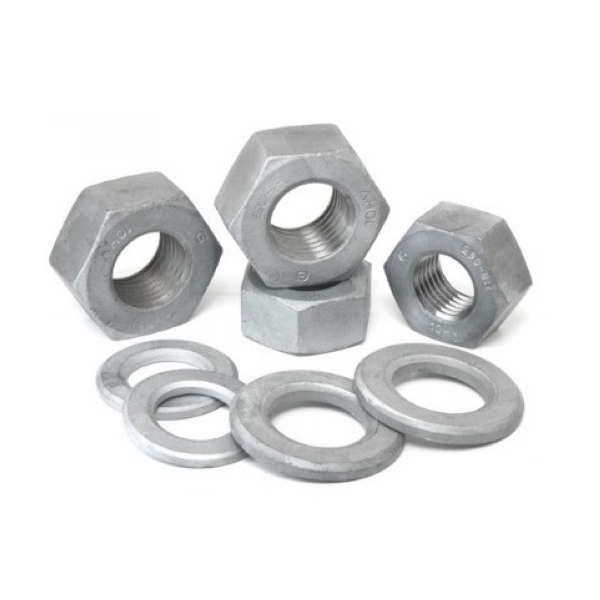Food Business Network News recently, held in Wuxi, China Institute of Food Science and Technology at the annual meeting, the US Dairy Export Council held a dairy forum on the characteristics of raw materials and opportunities for innovation milk protein invite American experts from the US Dairy Export Council, Northeast The four experts from Agricultural University, Sun Yat-Sen University and Fuzhou University are instructive from different perspectives on how to use the milk industry to develop new products and meet market demand from the food industry.
Sarah Geddes, Consultant, American Dairy Export Association
Applying dairy ingredients to meet consumer appeals
As China's economy continues to prosper, Chinese consumers, especially urban residents, face more health challenges due to lifestyle changes. The use of dairy ingredients can provide consumers with healthier foods. Increasing the protein content of your daily diet can help your health age.
Consumers prefer a more natural food with clean labels, which is a global trend. Dairy products are mostly foods that use clean labels and are therefore attractive. Dairy not only brings health, but also enhances the flavor of the product, such as in beverages, snacks, dipping sauces and foods.
High-quality protein should be evenly distributed for three meals a day, throughout the adult life. For a long time, nutritionists have considered the daily intake of protein or the recommended amount of reference. However, protein optimization should not only consider the quantity, but also the quality and timing of the intake. By evenly distributing the intake throughout the day, proteins can be used efficiently. The results of the survey show that the protein content of breakfast is usually the lowest, and milk protein can help fill this gap.
In 2020, the elderly population aged 65 and over is expected to account for 11.8% of the total population of China. By 2035, more than 70% of China's population will live in cities.
A health and nutrition survey for China showed that less than one-fifth of the Chinese people over the age of 60 had a protein-to-energy ratio that reached the recommended value. Whey protein or milk protein can be applied to beverages, rice noodles, yogurt, frozen desserts, soups and many other foods to increase the protein content of these foods.
In 2015, the Canadian Society of Nutritional Dietary and Dietitians and the American College of Sports Medicine jointly issued a position statement stating that young people should consume 20-25 grams of high-quality protein per meal. Middle-aged and elderly should be photographed at each meal. Enter 30-40 grams of high quality protein. Ingesting the right amount of high-quality protein per meal optimizes the synthesis of muscle protein throughout the day, promotes muscle mass and muscle function through dietary supplements, and helps successful overweight and obese people achieve successful weight management.
Milk protein binding to plant proteins optimizes protein quality. In 2013, the UN Food and Agriculture Organization and the World Health Organization proposed a new method for assessing protein quality, the Digestible Essential Amino Acid Scoring (DIAAS). This new method is more accurate than the method that has been used since 1998, the Protein Digestion Corrected Amino Acid Scoring (PDCAAS). The DIAAS method shows that milk proteins provide all the essential amino acids that can be used to bind plant proteins to make more efficient use of proteins. Rice, wheat and corn are staple foods for Chinese diets, but they are not completely protein. By mixing 50 grams of each of wheat and whey protein, a complete protein can be formed. Complete protein can also be obtained by mixing corn and milk protein in a ratio of 40:60 grams.
Both whey and milk proteins concentrate proteins to varying degrees. For specific applications, many new materials with better application characteristics have also been developed, and their dispersibility, thermal stability and gelation have been further improved. Thermal stability can be defined as the characteristics of no agglomeration, precipitation, excessive viscosity, and gelation after high temperature treatment in UHT or autoclave.
In addition to providing nutrients, milk raw materials also have a variety of functionalities in processing, such as foaming properties in ice cream and desserts, gel properties in cheese and yogurt, and emulsifying properties in soups and seasonings. It is very good function.
Innovative product application case
Whey Protein Beverage Whey protein isolates are used to make clarified beverages. The protein content is 5 grams per 240 ml of beverage. If you want a beverage with a milk tea-like state, milk concentrate protein is a better choice. For beverages as a whole, if the appearance is transparent, the pH is generally between 2.8 and 3.4. If it is an opaque beverage, the recommended pH range is 3.5 to 4.5.
Whey Protein Fish Seafood This formula provides 8 grams of protein per 100 grams of food. The application of whey protein concentrate can improve the water retention of the fish cake gel and prevent the autolysis of the fish gizzard.
Milk protein grain powder The content of lysine in flour is relatively low. Adding whey protein concentrate can enhance the content of acid. If used for making noodles, the strengthening of milk protein will make the noodles stronger and more elastic.
The double-protein beverage contains 30 grams of protein, partly from whey protein concentrate, partly from soy protein concentrate, milk protein and vegetable protein combined to ensure a higher protein content and economical.
Breakfast Bread The protein in the formula is derived from whey protein isolate and vegetable protein, including vegetable protein in whole wheat, oatmeal, flaxseed, and millet. High protein and whole grains are a popular new trend in the world.
According to the survey data, whey protein products have a very high growth rate among new products. From 2005 to 2010, the annual growth rate of whey protein global new products is 11%, and the growth rate in 2011-2016 is as high as 28 %.
Professor Zhou Peng, Director of the International Joint Laboratory of Milk Protein Functional Ingredients, Jiangnan University
Design and development of milk protein ingredients based on nutritional and functional characteristics
In the four major types of foods commonly used in milk protein, how to adjust the relevant ingredients to better meet the product needs?
First, the milk protein used in high protein beverages.
Milk protein, also known as whole milk protein, contains almost all of the protein types contained in milk. The solubility of whole milk concentrate protein when it is newly produced is generally 80%-90%, but after a few months, even if it is stored in a cool place, its solubility decreases rapidly, which greatly affects By its use in beverages, it reduces the solubility and dispersibility in beverages. One of the reasons for the decrease in solubility is due to the accumulation of non-covalent bonds, and the promotion of aggregation due to the action of calcium. If you want to improve its solubility, through two adjustments, one is to adjust the calcium, and the other is to adjust the equilibrium state of the micelle to maintain its stability.
The strategy adopted is, on the one hand, decalcification, and when the decalcification rate reaches 20%, the solubility stability is greatly improved. Acid-regulated decalcification is more simplified and efficient than ion exchange decalcification. Acid regulation consists of two steps. Initially, it is simple acidification. After acidification, the calcium in the whole micelle will be partially released from the original micelle calcium phosphate. The liquid system of milk will be in the process of membrane filtration. Partially removed. This will greatly increase the solubility and dissolution stability of the dry powder state, and later adjust the pH back to improve the solubility. The acidified whole milk protein concentrate is transparent and is a good choice for developing clear protein beverages. At the same time, its foaming and emulsifying properties are also improved.
Second, the whey protein used in infant formula milk powder.
Infant formula milk powder was originally mainly spray-dried milk powder, but it was found that the difference between human milk and milk was very large, and the whey protein content of human milk was significantly higher than that of milk. Therefore, infant formula milk powder has gradually changed to use whey protein ingredients, and in recent years, the application of whey protein peptide has been increased. The addition of whey protein peptide to infant formula is mainly due to the fact that many infants have an allergic reaction to the whey protein of milk, and in view of digestion and absorption, whey protein peptide is used instead of whey protein. One problem that arises is that if the degree of hydrolysis of the peptide is not well controlled, it is prone to product agglomeration.
In addition, compared with human milk, the content of α-casein in cow's milk is high, the content of α-casein in cow's milk is low; the content of α-casein in human milk is low, and the content of β-casein is low. high. The improvement in the process can increase the yield of whey protein while obtaining β-casein. Most of the earliest whey was extracted from the remaining whey of the cheese, and now the separation of whey and casein is achieved by membrane technology. By membrane filtration and lowering the temperature to 4 ° C, a product with a whey protein and β-casein ratio close to 2:1 can be obtained, which is very close to the composition of human milk, and the process is simple. Its by-product casein can be used to produce soft cheese.
Third, milk protein in protein bar foods.
The protein bars made by the milk protein isolate (WPI) are very stretchable, and the protein bars made with casein are fine and uniform. If sodium caseinate is used, it is very elastic like a rubber ball, but if it is soy protein isolate (SPI), the texture is rough and grainy. Different proteins give different textures, adapt to different needs, sometimes emphasize its chewiness, and sometimes emphasize its palatability, so choose different proteins. Not only do you have to control the type of protein, but you also control the properties of the powder, including its size and composition.
Fourth, 3D prints milk proteins in food.
Initially researchers wanted to use milk protein concentrate (MPC), but later found that simply using MPC is not possible because it is too dry. MPC is relatively strong in water retention, but it feels that its palatability is poor. When a little WPI is added inside, the whole nature has changed greatly. The 3D printer has a good fluid property during the extrusion process. However, after extruding, I still want to have plasticity immediately. These two points are actually contradictory in themselves, which puts high demands on materials.
With the appropriate ratio of MPC and WPI, the WPI here is 30%, which can be squeezed out well, layer by layer, and finally the three-dimensional effect. Simply using WPI, if it is less than 30%, it can't be played, 30% can be played, but a slight increase of 10% will soon flow. Therefore, in the whole process of using milk protein ingredients, it is not only necessary to grasp the characteristics of simple ingredients, but also the mixing characteristics. Rarely, a single protein is used alone, but the properties of different proteins are combined, and the mixed protein is used to synthesize its nutritional properties and processing functionality.
Liu Shuzhen, Director of the Institute of Bioengineering, Fuzhou University
Lactose intolerance effect of different dairy products
In milk, the lactose content is about 4.7%, and the lactose content in breast milk is about 7.2%. Lactose has various physiological activities, such as promoting calcium absorption and improving infant immunity.
Lactose intolerance refers to lactose and dairy products. Due to the lack of lactase, lactose cannot be normally metabolized, causing lactose to enter the colon, and the osmotic pressure of the colon increases, leading to diarrhea. In addition, the intestinal flora in the colon metabolizes it, producing gas, which causes symptoms such as bloating and abdominal pain.
Insufficient lactase, there are many cases, more adults are the lack of primary lactase. Nearly 100% of Chinese are of the type with insufficient lactase. However, in life, the incidence of lactose intolerance does not seem to be so common. It is not said that more than 50% of people drink diarrhea when drinking milk. In dairy products, there are factors affecting lactose intolerance. Some changes in drinking methods may lead to a certain improvement in lactose intolerance.
Recent studies have found that some milk containing A2 casein is metabolized in the body to produce a new type of peptide. Even if lactose is present in this milk, the symptoms of lactose intolerance will not occur. To verify, the researchers conducted a comparative trial to see if the treatment of dairy products, the amount of lactose in dairy products, and the use of different beta-casein dairy products could influence lactose intolerance.
First, the experiment designed the exclusion period. Volunteers with lactose intolerance responded to the milk in the body within one week and then intervened. The subjects were divided into three groups, the first group was given low lactose milk, the second group was drinking water milk, and the third group was fermented milk (yoghurt) group, and then a week of clearing period.
Next, the milk of A2 casein is compared. The first group is A2 milk, the second group is mineral salt lactose powder, and the third group is ordinary milk powder, which is hot water brewing. Edible situation. After the recovery period, all the people then eat pure milk, and observe the symptoms related to lactose intolerance at room temperature.
From the experimental results, the effect of A2 milk on lactose intolerance was improved. The reason for the analysis is that the β-casein of the A1 type and the degradation product BCM7 will increase the lactose intolerance, and the β-casein of the A2 type and the degradation product BCM9 can improve the lactose intolerance.
Studies have shown that yogurt, banana milk and hot milk all improve the intestinal response after eating dairy products. Studies have found that lactose in milk exists not only in the form of single molecules, free molecules, but also in the form of complexes with other molecules, such as casein. The presence of such complexes can lead to more serious conditions that would otherwise cause lactose intolerance.
Professor Zhu Huilian, Head of the Department of Nutrition, School of Public Health, Sun Yat-Sen University
Whey Protein Nutrition Progress
In the dietary guidelines for Chinese residents, the recommended amount of protein is 65 grams per day for men and 55 grams for women. The energy supply of protein accounts for about 12% of the total energy. However, in fact, the basal metabolism of the elderly is decreasing with age, and the recommended amount of energy is gradually decreasing, but the recommended amount of protein, no matter how old, the recommended amount of male protein in China is 65 grams, female. They are all 55 grams, which means that when the energy needs of the elderly decline, it is particularly difficult to achieve the same protein requirements as young people.
The study found that the protein intake of middle-aged and elderly people over the age of 50 in China began to decline with the increase of age. Compared with young people, 70-year-old men and women decreased their protein intake by 13.2% and 12.8 respectively. %, that is, the protein intake of the elderly is low. Insufficient protein intake in the elderly has various hazards to the health of the elderly. One of the more important ones is the loss of muscles, which leads to decreased motor function, easy to fall and fracture, less dietary nutrient intake, and malignant formation. cycle. Muscle attenuation is also associated with many chronic diseases.
Increasing protein intake is beneficial to the elderly's muscle health. Older people with high protein intake will have 40% less muscle attenuation than older people with lower protein intake. The synthesis of muscles must have enough protein in each meal, for example, about 25-30 grams. The study found that the muscle strength and muscle mass of the elderly who consumed the protein unevenly in three meals was lower than that of the elderly who consumed the protein on average. Therefore, the Nutrition Society of China Nutrition Society released an expert consensus on nutrition and exercise intervention in muscle attenuation syndrome. In this expert consensus, increasing protein intake is a class A evidence that promotes muscle synthesis to slow down muscle decay syndrome, and Class A evidence is the strongest evidence. In addition, in this recommendation, it is recommended that the ratio of high-quality protein per day is preferably 15%. And high-quality proteins rich in amino acids such as leucine, such as whey protein and other animal proteins, are beneficial to muscle decay syndrome.
In leucine-rich or branched-chain leucine-rich proteins, milk is a food source rich in branched-chain amino acids and leucine in Chinese. Milk protein is rich in branched-chain amino acids, and human muscles are actually a mixture of branched-chain amino acids, so it can provide the branched-chain amino acids closest to muscle composition needed by human muscles. Because milk protein can be quickly digested, it can provide rich essential amino acids and abundant branched chain amino acids like leucine, which has a lot of good help for the invigoration of the ingestor. For example, in short-term exercise, in a short period of exercise, whether you add whey protein before or after exercise, you can see that muscle protein synthesis is superior to other proteins.
Although nutrition and exercise therapy have become a consensus in the muscle attenuation of the elderly, some studies have found that the elderly are not very sensitive to resisting exercise. Some studies have also found that resistance to exercise can increase some serious injuries in the elderly. For the elderly, simple resistance exercise may not be sensitive to the synthesis of muscle protein in the elderly. Therefore, it may be a more reasonable way to promote muscle synthesis in the elderly through nutrition, especially through protein supplementation.
In protein supplementation and promotion of muscle synthesis in the elderly, studies of protein from different sources have found that the intervention of whey protein has a better effect on the muscles of the elderly. Among various food sources, leucine plays a very important role in muscle synthesis, especially in the muscle synthesis of the elderly. The content of leucine in whey protein is the highest, and various other kinds. For animal foods, the amount of leucine is about 10% and below, while whey protein can reach 14%. Intervention trials were conducted on muscle loss in the elderly. The elderly subjects were divided into four groups, and proteins mixed with soy protein, soy protein, and whey protein, whey protein, and a control group were administered, respectively. The results showed that the rate of decline in muscle mass in the whey protein intervention group was significantly slower than that in the control group, and the muscle function was significantly stronger than the control group.

turbine manufacturers to 'single source'all their fastener requirements with all the advantages that this brings, providing a range of fasteners, both standard and customer bespoke for:
WHAT ARE WINDMILL POWER FASTENERS?

A most common 3 blades wind turbine requires almost 25,000pcs fasteners. With the rapid increase of wind energy demand in the worldwide, the fasteners for wind turbine and energy increased greatly as well. Most high strength bolts used for wind turbine are grade 10.8, grade 12.9 and the coatings are also very crucial, Dacromet are most commonly coating in wind turbine fasteners.




Wind Energy Fasteners Supplier China, Yokelink
sales@yokelink.com
Wind mill ,Wind Power fasteners, Wind mill Turbine, Stud Bolt, windmill energy, house wind turbine, Wind Turbine Blades
Ningbo Yokelink Machinery Co.,Limited , https://www.yokelink.com